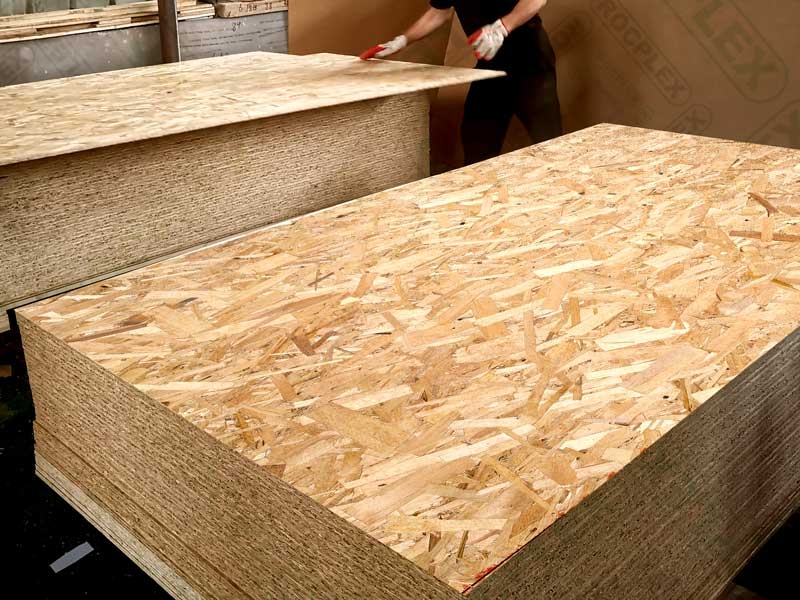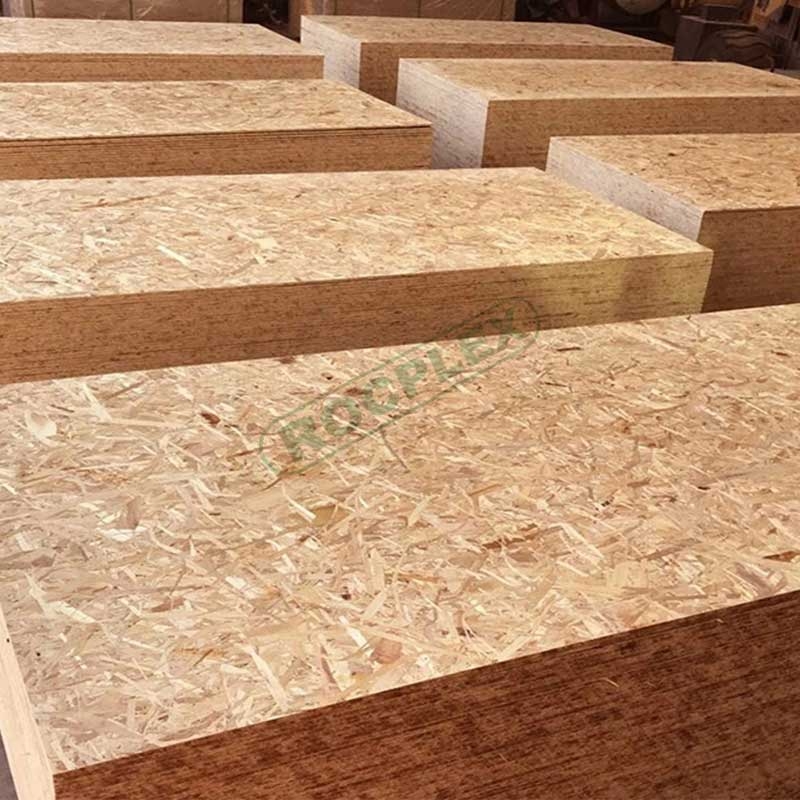In the ever-evolving realm of construction, the choice of building materials plays a pivotal role in determining the success and longevity of a structure. One material that has been steadily gaining popularity in modern construction projects is Oriented Strand Board (OSB) wood. This article aims to decode the decision-making process behind the surge in OSB wood usage, exploring its versatility, affordability, and the factors influencing the choice between traditional materials and this innovative option.
What is OSB Wood?
Oriented Strand Board (OSB), commonly known as OSB wood, is a versatile engineered wood product made by compressing strands of wood with adhesive under high pressure and temperature. The result is a robust and cost-effective panel with consistent strength and structural integrity. OSB is a popular alternative to plywood in various construction applications due to its unique manufacturing process and advantageous properties.

The Rise of OSB Wood: A Modern Marvel
In recent years, the construction industry has witnessed a notable shift towards embracing OSB wood as a primary building material. But what makes OSB wood stand out in a market dominated by plywood and other traditional options? The answer lies in its composition and manufacturing process.
Manufacturing Excellence: ROC International Trading Co., Ltd. Leading the Way
Xuzhou ROC International Trading Co., Ltd. (ROC) stands as a key player in the production of high-quality OSB wood. Their commitment to manufacturing excellence has contributed significantly to the material’s growing popularity. ROC’s dedication to producing OSB wood that meets stringent quality standards positions them as a reliable choice for builders seeking durability and performance.
OSB Wood: Applications in Construction
1. Structural Sheathing
OSB wood finds widespread use as structural sheathing in residential and commercial construction. Its exceptional strength and dimensional stability make it an ideal material for sheathing walls, roofs, and floors. OSB panels contribute to the structural integrity of buildings, providing a solid and reliable base for other construction materials.
2. Subflooring
In flooring applications, OSB serves as a durable and stable subflooring material. It provides a flat and even surface for the installation of finished flooring materials such as hardwood, laminate, or carpet. The consistent composition of OSB ensures a reliable foundation that helps prevent squeaks and uneven surfaces in flooring systems.
3. Exterior and Interior Applications
OSB wood is suitable for both exterior and interior applications. Its weather-resistant properties make it a reliable choice for exterior sheathing and roofing. Additionally, OSB is often used in interior applications such as wall panels and furniture components, showcasing its adaptability in various construction scenarios.
Considering OSB for DIY: A Practical Perspective
“Have You Considered OSB Wood for Your Next DIY Project?” The question resonates with homeowners and DIY enthusiasts looking for cost-effective yet durable solutions. OSB wood’s affordability and ease of use make it an attractive option for various DIY applications. Whether it’s crafting furniture, building shelves, or creating custom fixtures, OSB wood provides a versatile canvas for creative endeavors.
1. Versatility Unleashed: OSB Wood in DIY
Unleashing the potential of OSB wood in DIY projects opens a realm of possibilities. Its consistent composition and smooth surface make it easy to cut, shape, and finish. From simple home decorations to complex furniture designs, OSB wood lends itself well to customization, empowering DIY enthusiasts to bring their ideas to life.
2. OSB Wood: Where to Buy
When considering incorporating OSB wood into a construction project, choosing a reliable supplier is crucial. Xuzhou ROC International Trading Co., Ltd. (ROC) stands out as a reputable manufacturer of OSB wood. Their commitment to quality and innovation has made them a trusted source for engineered wood products. By visiting their website here, builders and contractors can explore the range of OSB wood options available, along with detailed specifications to suit diverse project requirements.
OSB Wood: What to Consider When Buying
1. Grade and Thickness
OSB wood is available in different grades, with each grade designed for specific applications. Builders should consider the intended use and choose the appropriate grade accordingly. Additionally, the thickness of OSB panels varies, and selecting the right thickness is essential to meet the structural requirements of the project.
2. Moisture Resistance
Considering the potential exposure to moisture is crucial when purchasing OSB wood. Moisture-resistant OSB panels are available for applications in damp or humid environments, providing enhanced durability and protection against swelling or delamination.
3. Certifications and Standards
Checking for industry certifications and adherence to standards is a key aspect of buying OSB wood. Xuzhou ROC International Trading Co., Ltd. (ROC) ensures that their OSB products meet relevant quality standards, offering customers peace of mind regarding the performance and longevity of the materials.
4. Supplier Reputation
The reputation of the supplier is a significant factor in the decision-making process. Choosing a trusted manufacturer like ROC ensures that the OSB wood purchased is of high quality and meets the specified standards. ROC’s dedication to customer satisfaction and product excellence makes it a reliable partner for construction material needs.
Revolutionizing Tradition: OSB Wood in Building Materials
“OSB Wood: Revolutionizing Traditional Building Materials?” The phrase captures the essence of a transformative shift in the construction landscape. While traditional materials like plywood have long been trusted, OSB wood introduces a fresh perspective on structural integrity, environmental impact, and overall efficiency.
1. Structural Strength and Stability
OSB wood’s engineered structure, comprising strands of wood compressed and bonded together, results in a material that boasts impressive strength and stability. This makes it an excellent choice for sheathing, flooring, and roofing applications, providing structural support without compromising performance.
2. Eco-Friendly Advantages
In an era where sustainability is paramount, OSB wood emerges as a greener alternative. Manufactured from fast-growing species and utilizing more of the log in the process, OSB minimizes waste and contributes to a more sustainable approach to construction.

Conclusion
In conclusion, OSB wood has become a staple in the construction industry, valued for its strength, versatility, and cost-effectiveness. When considering OSB for a project, builders and contractors should carefully evaluate their requirements and choose a reputable supplier like Xuzhou ROC International Trading Co., Ltd. (ROC). By doing so, they can harness the full potential of OSB wood in creating robust and resilient structures. Visit ROC’s website to explore the diverse range of OSB wood options and take a step towards elevating your construction projects with this dynamically engineered wood product.
Post time: 12 月-07-2023

